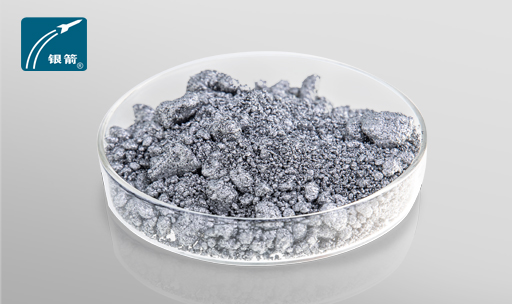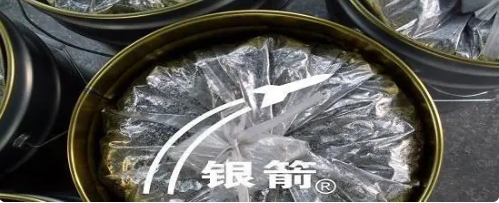Tips for choosing solvents for aluminium paste
2025 / 10 / 31


Choosing the right solvent for aluminium paste applications might seem like a small detail, but it's actually one of the most critical decisions that determines your coating success. The perfect solvent can transform your metallic finishes from mediocre to magnificent, while the wrong choice can lead to countless problems. Let's explore why solvent selection matters and how to make smart choices for your aluminium paste formulations.
Why Solvent Choice Matters for Aluminium Paste
The relationship between aluminium paste and its solvent goes beyond simple dissolution. The right solvent affects everything from application smoothness to long-term durability. When you pair aluminium paste with compatible solvents, you unlock its full potential for brilliant metallic effects and reliable performance.
Understanding Solvent Types and Their Effects
Polar vs. Non-Polar Solvents
Aluminium paste behaves differently depending on whether you use polar or non-polar solvents. Non-leafing aluminium paste offers flexibility with both types, but each has distinct advantages:
Ester Solvents - The Gold Standard
Esters like ethyl acetate and butyl acetate are often considered ideal partners for aluminium paste. They offer:
-
Excellent dissolving power for most resin systems
-
Balanced evaporation rates for smooth film formation
-
Good wetting characteristics for optimal flake dispersion
-
Minimal negative impact on aluminium paste stability
Hydrocarbon Options
Aromatic hydrocarbons like toluene and xylene provide:
-
Strong solvating power for many resin types
-
Cost-effective formulation options
-
Good compatibility with many aluminium paste grades
Alcohol Considerations
While alcohols are polar and useful in specific formulations, they require careful handling with aluminium paste due to potential reactivity concerns.
The Water Problem: Prevention and Solutions
Water is public enemy number one for aluminium paste formulations. Even small amounts can cause significant issues:
The Hydrogen Gas Problem
When water encounters aluminium paste, it triggers a chemical reaction that produces hydrogen gas. This leads to:
-
Pressure buildup in containers (potentially dangerous)
-
Reduced metallic brilliance
-
Changes in viscosity and application properties
-
Shorter shelf life for your formulations
Moisture Control Strategies
Successful aluminium paste formulations maintain water content below 0.15%. Achieve this through:
-
Using solvents with certified low water content
-
Storing materials in sealed containers
-
Working in controlled humidity environments
-
Adding moisture scavengers when necessary
Danger Zones: Solvents to Avoid
Some solvents create immediate problems for aluminium paste:
Chlorinated Solvents - Absolute No
Chlorinated solvents like methylene chloride should never contact aluminium paste. They break down and release hydrochloric acid, which:
-
Attacks aluminum flakes, causing darkening
-
Generates gas and pressure buildup
-
Completely destroys metallic effects
-
Creates safety hazards
Incompatible Mixtures
Even good solvents can cause trouble when mixed improperly. Always test new combinations before full-scale production.
Practical Selection Guidelines
Matching Solvent to Application Method
Your application method should guide solvent choice:
Spray Applications
-
Choose solvents with moderate evaporation rates
-
Balance fast drying with good flow characteristics
-
Consider mixed solvent systems for optimal performance
Brush and Roller Applications
-
Select slower-evaporating solvents
-
Ensure good leveling and brush mark elimination
-
Maintain open time for proper flake orientation
Factory Application Conditions
-
Account for temperature and humidity in your facility
-
Choose solvents that work with your drying equipment
-
Consider worker safety and ventilation capabilities
Performance Optimization Tips
Testing Before Scaling
Always conduct small-scale tests when introducing new solvents to your aluminium paste formulations. Look for:
-
Smooth, even dispersion
-
Consistent viscosity over time
-
No gas formation or pressure buildup
-
Good metallic appearance in dried films
Solvent Blending Strategies
Sometimes, the perfect solvent is actually a blend. Consider mixing:
-
Fast and slow evaporators for ideal drying profiles
-
Different solvent types to balance cost and performance
-
Specialty additives to enhance specific properties
Safety and Environmental Considerations
Worker Protection
While optimizing aluminium paste performance, don't forget about safety:
-
Choose lower-toxicity solvents when possible
-
Ensure adequate ventilation in working areas
-
Provide proper personal protective equipment
-
Follow all regulatory guidelines
Environmental Responsibility
Modern aluminium paste formulations increasingly consider:
-
VOC content regulations
-
Biodegradability concerns
-
Recycling and disposal requirements
-
Sustainable sourcing practices
Troubleshooting Common Solvent Issues
Problem: Poor Dispersion
If your aluminium paste isn't dispersing well:
-
Check solvent compatibility with your specific paste grade
-
Verify solvent purity and water content
-
Adjust mixing speed and duration
-
Consider adding appropriate wetting agents
Problem: Drying Issues
For inconsistent drying:
-
Review solvent evaporation rates
-
Check application environmental conditions
-
Verify film thickness is appropriate for your solvent system
Problem: Storage Stability
If formulations change over time:
-
Monitor container pressure as an early warning sign
-
Check for water contamination
-
Verify solvent quality and purity
-
Review storage conditions and shelf life
Expert Recommendations
Through extensive testing and customer feedback, we've found these approaches work well for most aluminium paste applications:
Start with Esters
When in doubt, begin your formulation work with ester solvents. They typically provide the best balance of performance characteristics for aluminium paste.
Control Water Meticulously
Implement strict moisture control measures from material receipt through final application. This single factor prevents more aluminium paste problems than any other.
Test Systematically
Develop a standard testing protocol for evaluating new solvent combinations with your aluminium paste. Consistent evaluation prevents surprises in production.
Conclusion: Smart Choices Lead to Beautiful Results
Selecting the right solvent for your aluminium paste isn't just about making coatings work – it's about making them work brilliantly. The extra attention you pay to solvent selection pays dividends in:
-
More consistent production batches
-
Reduced waste and rework
-
Higher quality metallic effects
-
Fewer application problems
-
Better overall cost efficiency
Remember that the perfect solvent system depends on your specific aluminium paste grade, application method, and performance requirements. Don't hesitate to consult with technical experts and conduct thorough testing. The time invested in proper solvent selection always returns value through superior finished products.
By understanding these solvent selection principles and applying them systematically, you can unlock the full potential of aluminium paste in your coatings and create stunning metallic effects that impress customers and stand the test of time.

